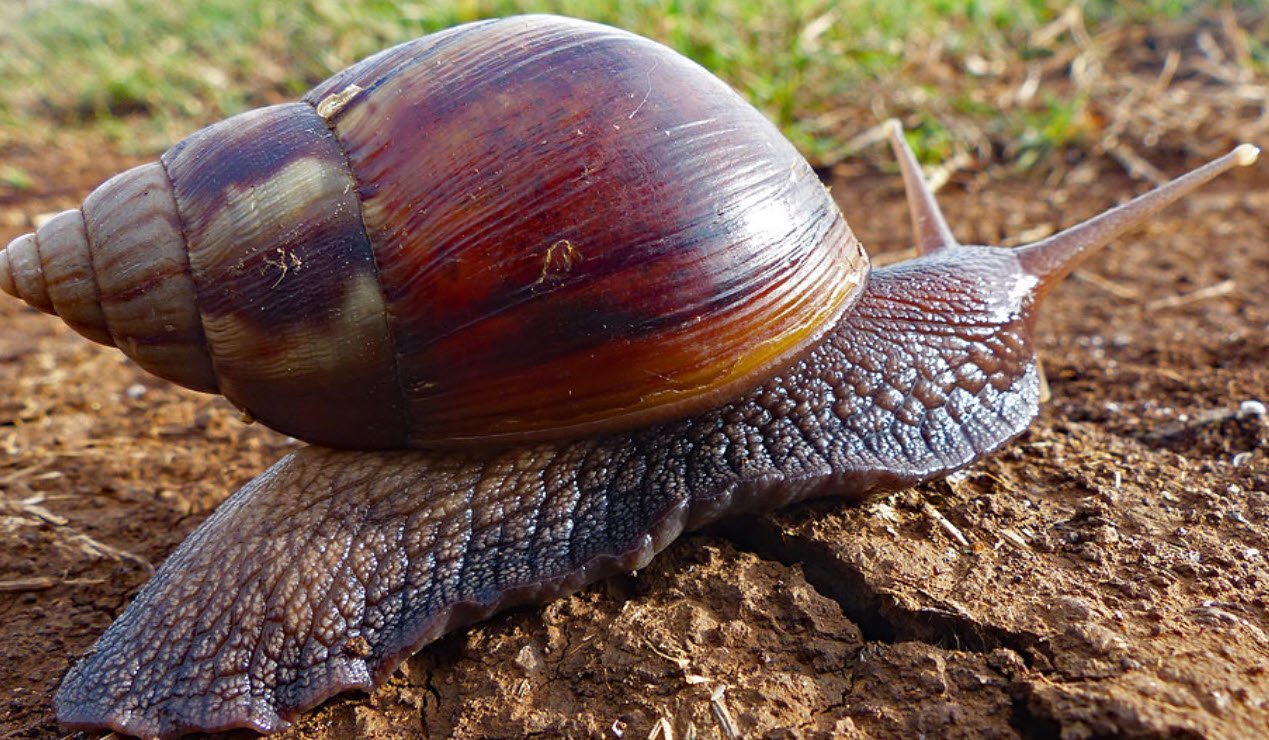Snail farming
₦0.00
IDENTITY: Achatina achatina (Linné, 1758) Systematics: ACHATINIDAE, PULMONATA, GASTROPODA,MOLLUSCA Common names: Giant African Snail,
DESCRIPTION: Dimensions: Up to 20 cm in height, and 10 cm in maximum diameter. Description: “The full-grown shell … has from seven to eight whorls and is very broadly ovate, with a long and greatly swollen body-whorl comprising most of the bulky shell. The regularly conical, relatively short spire, occupying only about one-fourth of the total length, is considerably narrower than the base and its whorls are only slightly convex. As a result, immature shells are relatively more slender than adults. In the smaller races, the fully-grown shell is narrower, more elongate -oval, with the body-whorl moderately inflated, while by contrast the spire appears longer and wider…” “The sutures are shallow, the upper part of each whorl being flattened against the periphery of the preceding whorl. This subsutural area is covered with coarse vertical folds and as a rule set off by a strong impressed line on the penultimate and body-whorl. The suture itself is finely and irregularly crenulate. On full-grown shells the furst two or three whorls are either worn smooth or corroded or show traces only of the granulation which originally covered them. The succeeding whorls show typically a decussate sculpture of elongate welts, best developed on the penultimate whorl and gradually weaker on the body-whorl, particularly below the periphery; a few traces only of the sculpture remain on the last portion of the body-whorl, behind the outer lip. The welts are produced by the decussation of moderately strong growth-striae by weak or superficial spiral engraved lines, placed rather far apart and at irregular intervals. In some specimens the decussate sculpture is barely indicated. The glazing of the parietal wall is slight, the outer lip sharp and thin and the columella strongly concave, slightly curved upward at the base, which is almost squarely truncate some distance above the lower margin of the aperture.” “Columella and parietal wall vinaceous red.” (Bequaert, 1950)
HOSTS: As a phytophagous gastropod, this species is not host-specific. It has been documented as causing economic damage to various crop plants in West Africa.
GEOGRAPHIC DISTRIBUTION: Original distribution: believed native to West Africa, within 100-180 miles of the coasts of Sierra Leone, Liberia, Ivory Coast, Togo, Dahomey, Ghana, and Nigeria.
LIFE HISTORY: Very little is known.
MOVEMENT AND DISPERSAL Natural spread: Natural spread is extremely slow. Man-assisted spread: Transportation on local produce, intentional spread by individuals for food and as folk medicine..
PEST SIGNIFICANCE Economic impact: Crops reported affected by this species cabbage, cassava, lettuce, papaya, sweet potato, and yam in Ivory Coast, and lettuce, oil palm, orange, papaya and pear in Ghana


Reviews
There are no reviews yet.